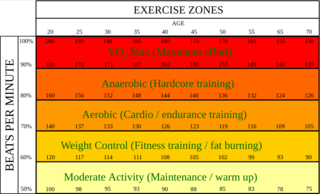Anxiety
Do Easy Workouts Help to Combat Anxiety?
Low- and high-intensity physical activity may both alleviate chronic anxiety.
Posted November 11, 2021 Reviewed by Michelle Quirk
Key points
- Accumulating evidence suggests that physical activity (cardio/strength training) can be an effective drug-free way to combat anxiety.
- New research shows that both low-intensity physical activity and moderate-to-vigorous workouts may alleviate anxiety symptoms.
- High-intensity cardio workouts (e.g., HIIT) may reduce anxiety more than low-intensity cardiorespiratory activities (e.g., casual walking).

A new randomized, controlled trial suggests that a fitness routine involving a combination of resistance (strength) training and low-, moderate-, or high-intensity cardiorespiratory (aerobic) activity can reduce anxiety symptoms. These peer-reviewed findings (Henriksson et al., 2021) were recently published in the Journal of Affective Disorders.
This research builds on a systematic review and meta-analysis (Aylett et al., 2018) comparing low- and high-intensity exercise in the treatment of clinical anxiety that concluded: "High-intensity exercise regimens were found to be more effective than low-intensity regimens."
Alleviating Anxiety With Both Low- and High-Intensity Exercise
The latest research by Malin Henriksson and colleagues at the University of Gothenburg in Sweden suggests that higher-intensity exercise reduces anxiety more robustly, but also shows that low- and moderate-intensity workouts can alleviate generalized anxiety disorder symptoms.
"There was a significant intensity trend for improvement — that is, the more intensely they exercised, the more their anxiety symptoms improved," Henriksson said in a news release.
For this 12-week study, the Swedish researchers recruited 286 patients who'd been diagnosed with "anxiety syndrome." About half of the study participants had been living with chronic anxiety for at least a decade. The average age of this cohort was 39 years, and the majority (70 percent) of participants were women.

Study participants were randomly assigned to one of three groups. One treatment group worked out at low-to-moderate intensity (60 percent of maximum heart rate) for one hour, three times a week, under the guidance of a trained physical therapist.
The second treatment group did the same 60-minute workout — which involved a blend of cardio and strength training — at a "high" degree of intensity based on Borg's rating of perceived exertion scale or about 75 percent of maximum heart rate. The third "non-exercise control group" didn't go to the gym with a trainer during this 12-week period.
Low-Intensity Physical Activity Works, but High-Intensity Exercise Works Better
Compared to the control group, anxiety symptoms significantly improved from baseline for people in both exercise groups based on their Beck Anxiety Inventory scores.
Notably, the researchers found that the odds for improved anxiety symptoms after low-intensity training rose by a factor of 3.62. However, the chance of improvement after moderate- or high-intensity training rose by 4.88. The authors explain this 3.62 vs. 4.88 difference: "There was a significant intensity trend for improvement in anxiety symptoms."
Although this study didn't focus on major depressive disorders, the researchers found that a 12-week exercise intervention also improved symptoms of depression when compared to the nonexercise control group based on scores from the Montgomery Åsberg Depression Rating Scale.
The latest (2021) research adds to a growing body of evidence showing that physical exercise can be a highly effective treatment for chronic anxiety.
"Doctors in primary care need treatments that are individualized, have few side effects, and are easy to prescribe. The model involving 12 weeks of physical training, regardless of intensity, represents an effective treatment that should be made available in primary health care more often for people with anxiety issues," senior author Maria Åberg concludes.
Disclaimer: As always, consult with your primary care physician or a medical doctor before kickstarting any new workout regimen that includes high-intensity exercise — especially if you haven't done moderate-to-vigorous physical activity in recent months.
References
Henriksson M., Wall A., Nyberg J., et al. "Effects of Exercise on Symptoms of Anxiety in Primary Care Patients: A Randomized Controlled Trial." Journal of Affective Disorders (First published online: October 10, 2021) DOI: 10.1016/j.jad.2021.10.006
Aylett E., Small N., & Bower P. "Exercise in the Treatment of Clinical Anxiety in General Practice: A Systematic Review and Meta-Analysis." BMC Health Services Research (First published: July 16, 2018) DOI: 10.1186/s12913-018-3313-5


